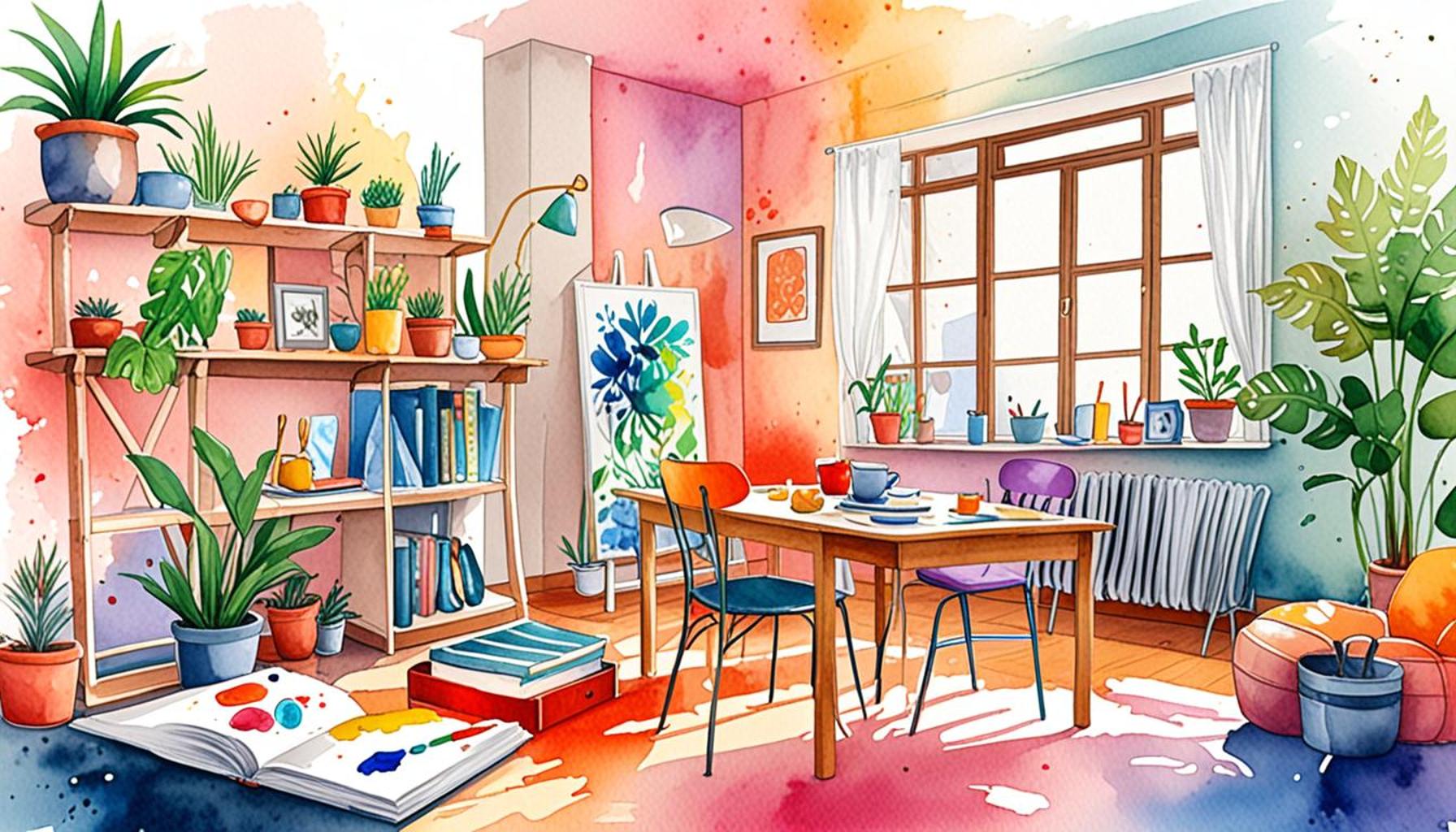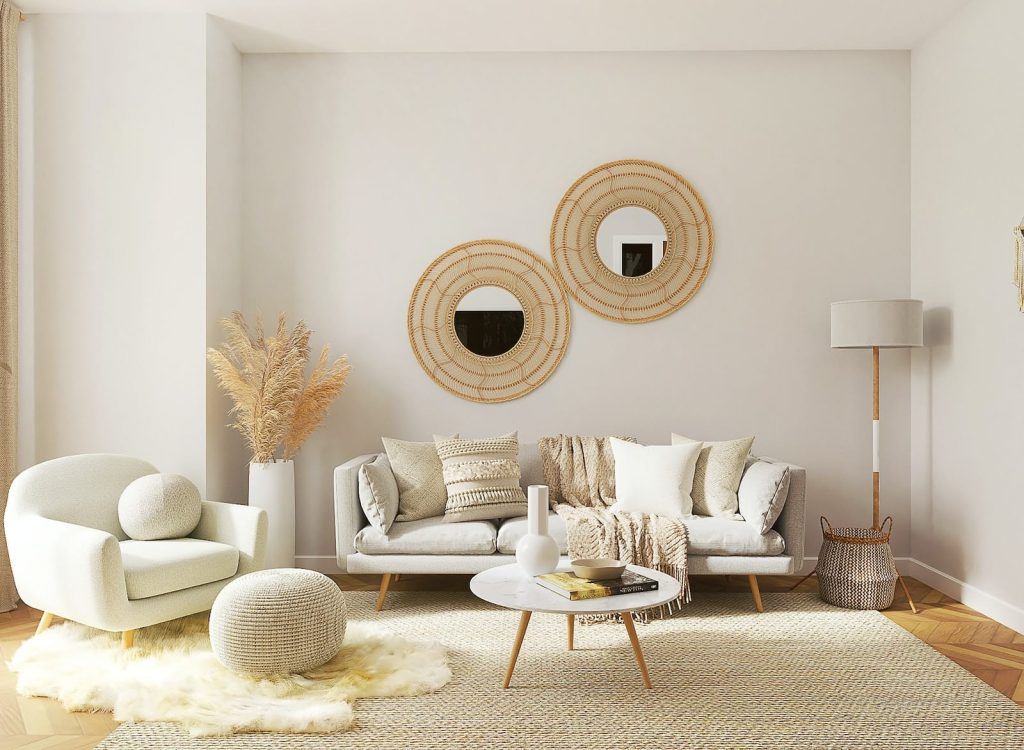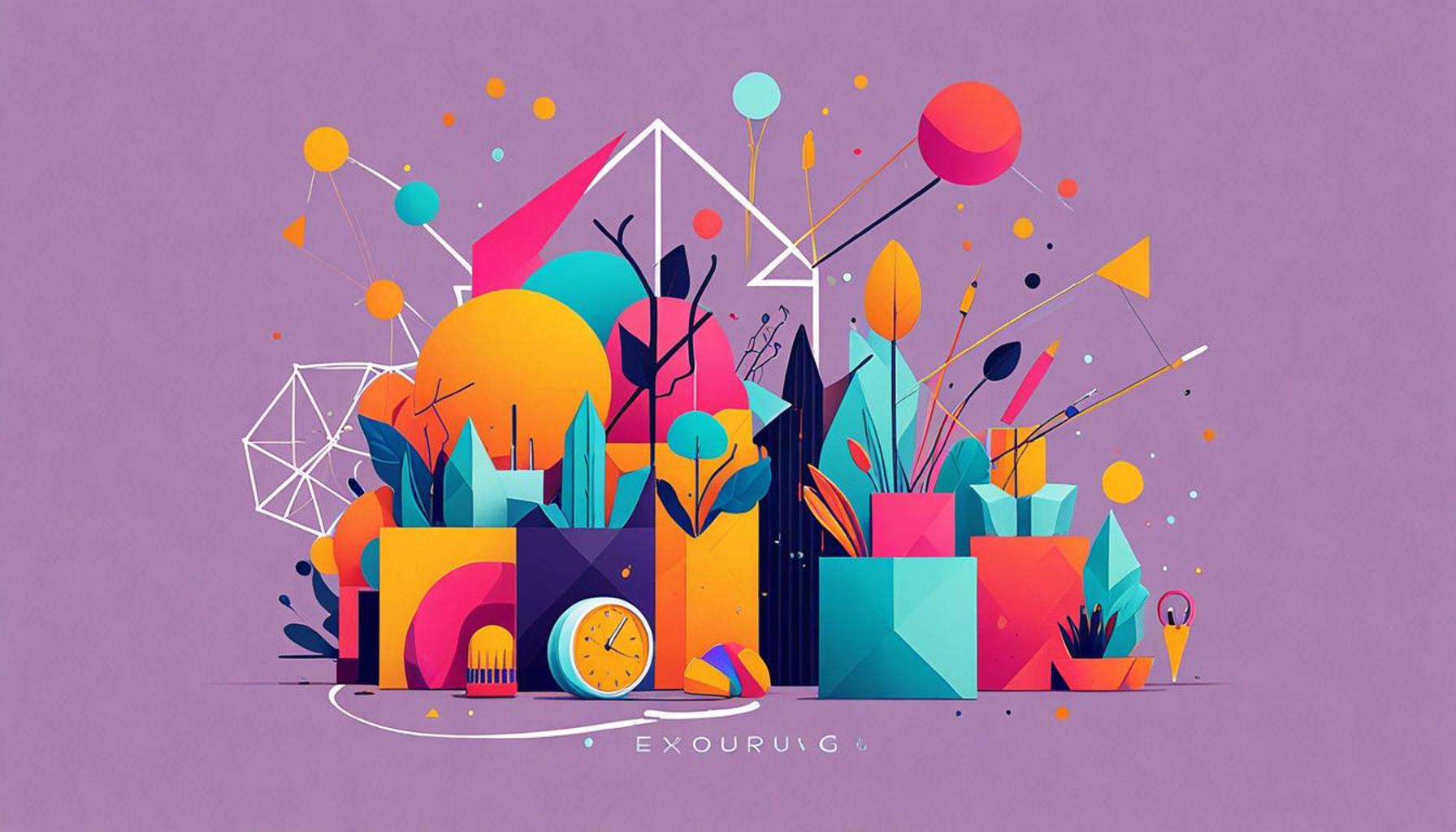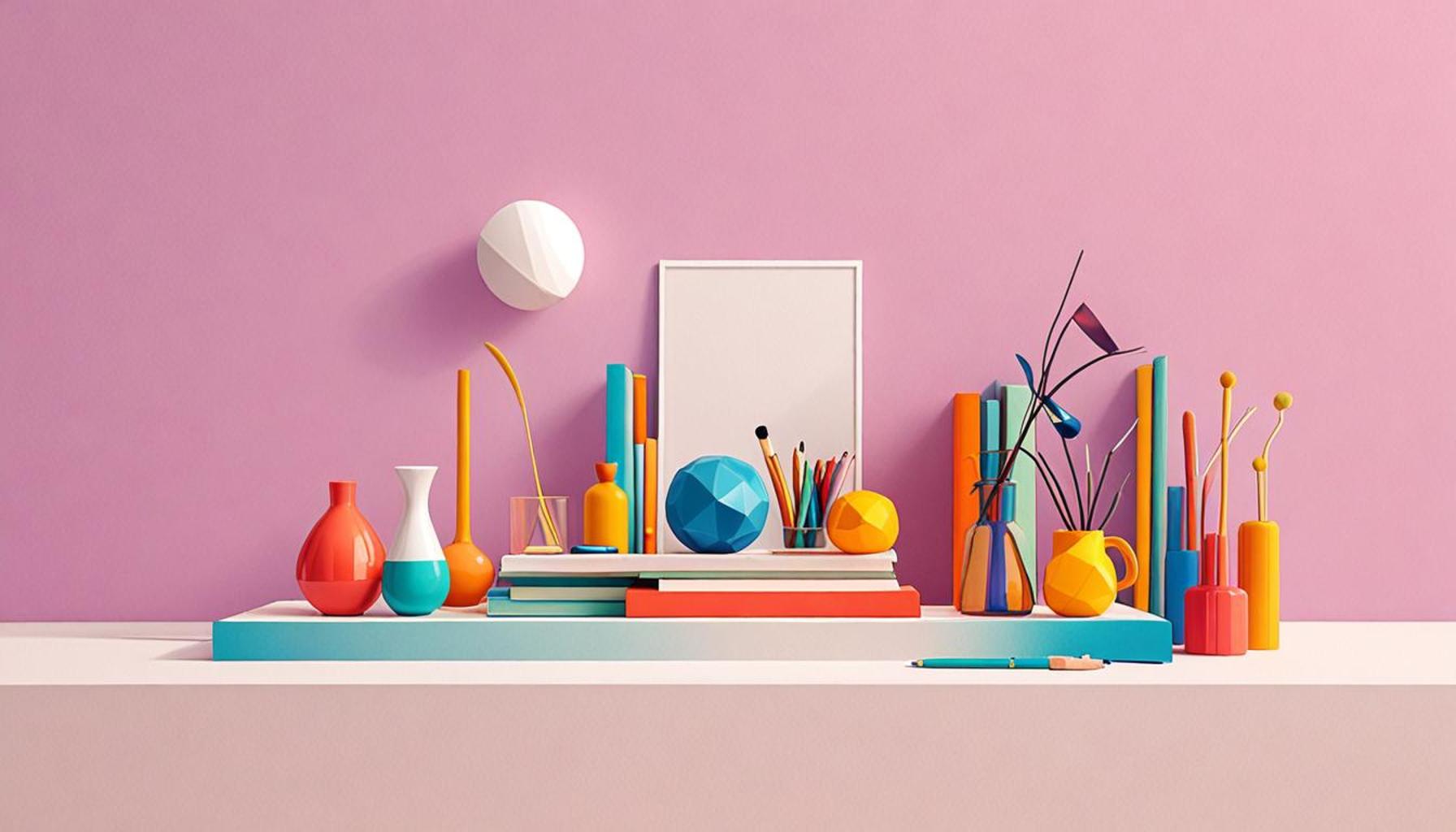Intentional Design and the Art of Creating Multifunctional Spaces

Understanding the Essentials of Intentional Design
In an era where urban living spaces are dwindling and the cost of real estate keeps climbing, the idea of multifunctional spaces has emerged as a beacon of innovative design. This approach revolves around intentional design, which is not just a fleeting trend but an essential philosophy that reflects our need for adaptable and versatile environments. By carefully considering how we utilize our spaces, we can enhance both their functionality and aesthetics to suit modern life.
One of the most significant aspects of intentional design is optimized functionality. This means engineering spaces that can easily adapt to various needs. For example, consider a home office that can transform into a guest room. By incorporating a Murphy bed or a convertible sofa, the room not only serves as a productive workspace during the day but also becomes a cozy retreat for visiting friends and family at night. This dual-purpose capability is crucial in maximizing limited floor space, especially in urban settings like New York City or San Francisco, where square footage can come at a premium.
Another critical component of intentional design is flexible layouts. This flexibility allows furniture and decor to be easily rearranged to accommodate different activities, be it a small gathering or a yoga class. Modular furniture, such as sectional sofas or stackable chairs, can be moved and reconfigured, making it simple to adapt the space for any occasion. For instance, a dining area could transform into a play space for children simply by moving aside a few pieces of furniture, demonstrating the power of thoughtful design in everyday life.
Sustainability is also at the forefront of intentional design principles. Emphasizing sustainable choices not only supports environmental well-being but also aligns with a minimalistic design approach. By selecting eco-friendly materials and furnishings, designers and homeowners can create spaces that are not only aesthetically pleasing but also durable. The use of reclaimed wood, organic fabrics, and low-VOC paints contributes to healthier indoor environments while ensuring that the design remains timeless and clutter-free.
To further illustrate these concepts, think of a small apartment that can fluidly evolve from a serene living room to an invigorating home gym. Imagine multifunctional pieces like an ottoman that doubles as storage for workout gear or a wall-mounted bike that disappears into the decor when not in use. Such intentional design choices allow residents to maximize every square foot, tailoring their environments to fit unique lifestyle needs.

Ultimately, intentional design transcends superficial aesthetics. It cultivates connections among inhabitants, accommodates changes over time, and promotes a profound sense of well-being in both residential and commercial settings. As we continue to explore the art of creating multifunctional spaces, we uncover how merging these elements can yield enriching environments that dynamically adapt to our ever-evolving lives.
DISCOVER MORE: Click here to learn about intentional design
Key Elements of Multifunctional Spaces
When delving into the heart of intentional design, it becomes crucial to explore the fundamental elements that define the creation of multifunctional spaces. These elements are not merely aesthetic choices; they are strategic decisions that significantly influence how a space is experienced and interacted with. To truly maximize utility and enhance the overall quality of life, it’s essential to consider the following components:
- Adaptability: One of the hallmarks of multifunctional design is the ability to easily adapt and transform according to changing needs. In small apartments, for instance, a dining table can double as a workspace, while a simple storage ottoman can transition into an extra seat for guests.
- Smart Technology: Integrating smart technology can further enhance the flexibility of spaces. Consider smart lighting systems that can change the ambiance based on the time of day or the function of the room. This innovation allows for a seamless transition from work mode to relaxation.
- Multi-purpose furniture: Furniture pieces designed to serve various functions are essential when planning multifunctional spaces. Items like a sofa bed or a coffee table with shelves underneath efficiently utilize space, offering functional solutions without sacrificing style.
- Zones within zones: Creating distinct areas within a larger space allows for various activities to occur simultaneously without disruption. A living room could feature a quiet reading nook alongside the main seating area, proving effective when hosting guests or providing family members with their preferred environment.
Incorporating these elements effectively can lead to transformative results. For example, think of a compact kitchen that efficiently utilizes wall space with hanging storage, clever cabinetry designs, and an island that serves multiple purposes—cooking area, eating space, and even a homework spot for children. In such a setup, every inch counts, and the environment remains functional while effortlessly suiting the lifestyle of its inhabitants.
The benefits of intentional design in creating multifunctional spaces extend beyond practicality; they also influence the emotional and psychological well-being of users. Spaces crafted with care can lead to enhanced productivity, reduced stress levels, and a greater sense of harmony at home or within a workspace. Moreover, this design philosophy encourages a more conscious approach to consumption, as residents are motivated to invest in fewer, higher-quality items that fulfill multiple roles.
As we continue this exploration of intentional design and its impact on modern living, it becomes increasingly clear that adapting to the dynamic requirements of today’s lifestyles can be both an art and a science. In a world where change is constant, the ability to create spaces that respond to our needs is not just desirable but necessary. This journey into the realm of multifunctional design reveals endless possibilities for innovation and expression, all while ensuring that environments are as adaptable as the people who inhabit them.
Understanding Multifunctional Spaces
Multifunctional spaces are gaining momentum in modern design and architecture, captivating homeowners and professionals alike. The core idea revolves around creating environments that serve multiple purposes while reflecting the occupants’ lifestyle and preferences. This innovative approach encourages intentional design, which focuses not just on aesthetic appeal but also on functionality and user experience. As we delve deeper, let’s examine the key advantages of an intentional design philosophy.
| Advantage | Description |
|---|---|
| Space Efficiency | Optimizes layout to utilize every square foot effectively, essential in urban environments. |
| Emotional Well-Being | Creates a sense of calm and productivity, enhancing comfort through intentional aesthetics. |
By embracing these advantages, you not only enhance the utility of your spaces but also enrich the overall lifestyle of occupants. The balance achieved through intentional design fosters connections within households and work environments alike, making it a critical aspect of contemporary architecture and interior design.
Exploring how to effectively implement multifunctional spaces can reshape your environment to meet your evolving needs. Keep reading to discover innovative strategies and inspiring examples of intentional design.
DIVE DEEPER: Click here for expert tips on minimalist organization
Crafting Personal Narratives Through Design
Intentional design is not solely focused on functionality; it also plays a pivotal role in shaping personal narratives within living spaces. Each area of a home or workspace can become a canvas, reflecting the identity and aspirations of its occupants. Personalization in multifunctional spaces enhances not only utility but also emotional resonance. By embedding personal stories into the design, individuals can create environments that resonate deeply with their unique lifestyles.
Consider the trend of open floor plans, which have gained popularity throughout American households. This design choice allows for a fluidity that is crucial in multifunctional settings, yet it also serves to bring families closer together. By creating shared areas that accommodate cooking, dining, and lounging, open layouts encourage interaction while providing the flexibility needed for various activities. Imagine a family gathering where the cooking is almost a performance, with everyone participating and sharing experiences across the same space.
Moreover, playing with color, texture, and decor can enhance the emotional quality of multifunctional spaces. Using warm colors and inviting materials not only defines a room’s character but also engages occupants on a sensory level. For instance, a workspace section within a living room can be subtly differentiated through the use of textures; a plush rug can denote a cozy reading area, while sleek, minimalist furniture can signal a productive working zone. These subtle distinctions foster the right mindset for distinct activities.
The Power of Flexibility in Design
The rise of the remote working culture has illuminated the importance of designing adaptable spaces that can shift between personal and professional uses. Homeowners increasingly seek strategies to integrate functional elements without compromising on aesthetics. For example, convertible furniture such as wall-mounted desks or expandable dining tables can provide essential workspace during the day, transitioning seamlessly to host gatherings by night. Such designs ensure that limited square footage serves diverse purposes, a necessity for urban dwellers in cities like New York or San Francisco.
Additionally, the implementation of storage solutions can significantly increase a space’s functionality. Built-in cabinetry that merges seamlessly with the architecture can hide away clutter and contribute to a streamlined look while still maximizing space. Creative use of under-bed storage or benches that open up to reveal compartments aids in maintaining a tidy environment—an essential factor for multifunctional spaces where chaos can easily ensue if not managed properly.
Incorporating elements such as biophilic design can enrich multifunctional areas by connecting indoor spaces with nature. This design philosophy emphasizes the integration of natural elements—like plants, natural light, and water features—to improve well-being and productivity. A workspace that incorporates greenery or a bright window can inspire creativity and reduce stress, aligning perfectly with the goals of intentional design. Furthermore, these aspects can serve as conversation starters, weaving a narrative of sustainability and connection to nature within the very fabric of a home.
In conclusion, the art of creating multifunctional spaces through intentional design extends far beyond practical considerations. It invites a deeper relationship between individuals and their environments, fostering personal expressions and nurturing connections. Whether the intention is to enhance productivity, maintain harmony, or simply embody one’s identity, the multifaceted potential of intentional design will continue to influence the evolution of our living and working spaces.
DISCOVER MORE: Click here to learn about the benefits of mindfulness and minimalism</
Embracing the Future of Intentional Design
The journey into the realm of intentional design and the creation of multifunctional spaces reveals a fundamental truth: our environments can significantly impact our lives. As we continue to navigate a world where adaptability is key, the ability to craft spaces that serve multiple purposes becomes increasingly essential. This practice not only enhances efficiency but also nurtures creativity, connection, and well-being.
Incorporating thoughtfully curated elements—such as flexible furniture, innovative storage solutions, and biophilic design—allows for a seamless transition between various activities, ensuring we make the most of every inch of our spaces. With a focus on personalization, individuals can imbue their surroundings with stories and emotions, making their spaces a true reflection of their unique identities.
As we embrace trends and explore opportunities for enhancing living environments, it’s essential to remember that intentional design is about much more than aesthetics. It is about fostering a harmonious balance between functionality and creativity, enabling us to thrive in our homes and workplaces. By prioritizing intentionality in our spaces, we pave the way for a future that values not just the physical aspects of our environment but also the profound connections and experiences they facilitate.
In concluding this exploration of multifunctional spaces, it becomes clear that as our lives evolve, so too must our designs. Engaging with intentional design allows us to shape not only our physical surroundings but also our experiences, enriching our journey in this dynamic world.


